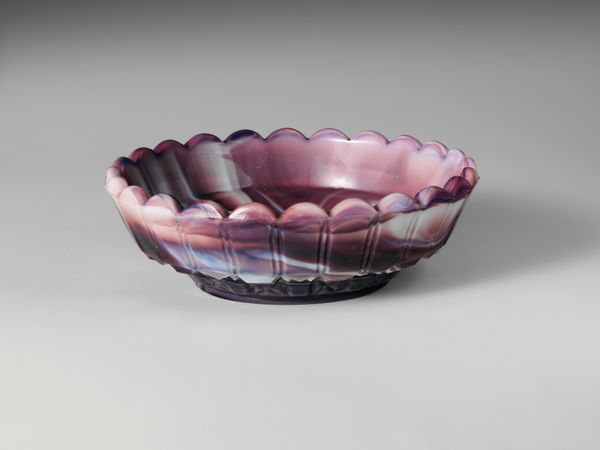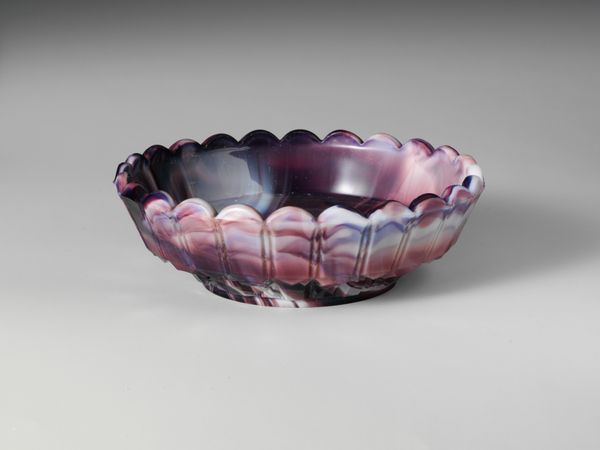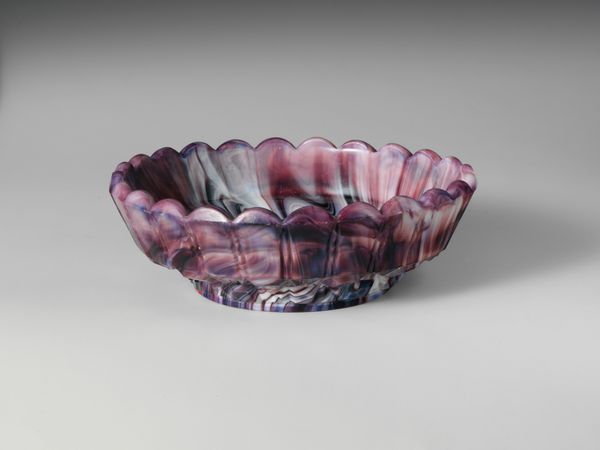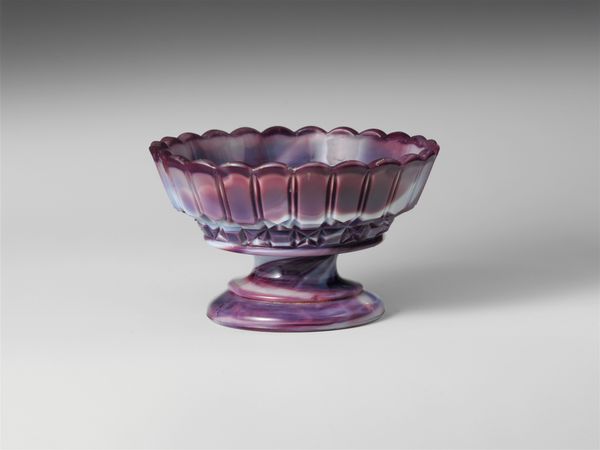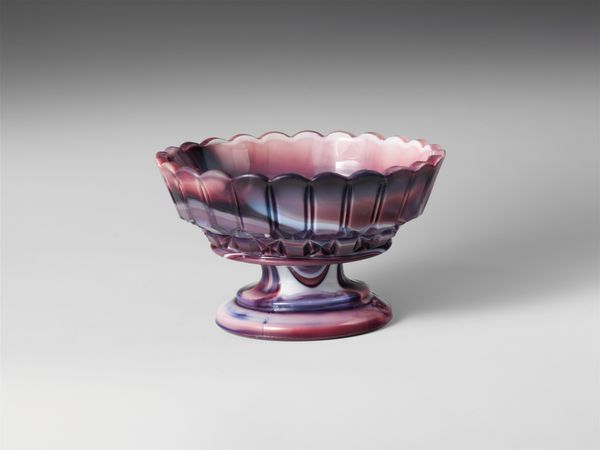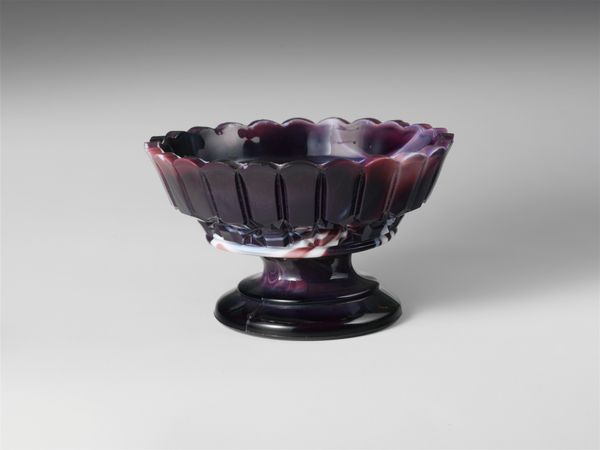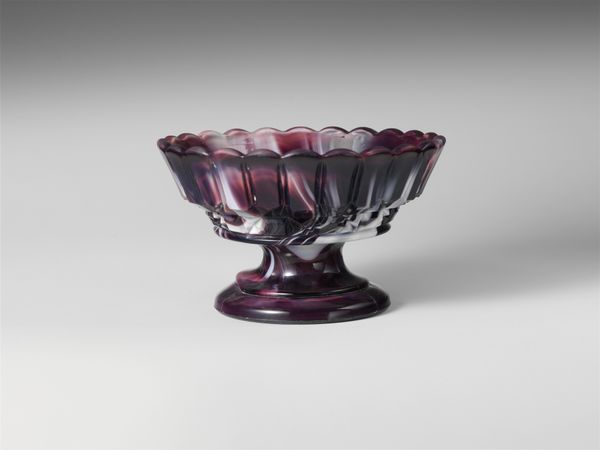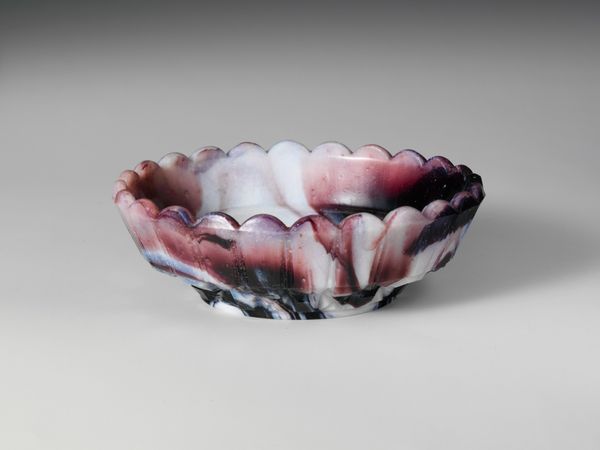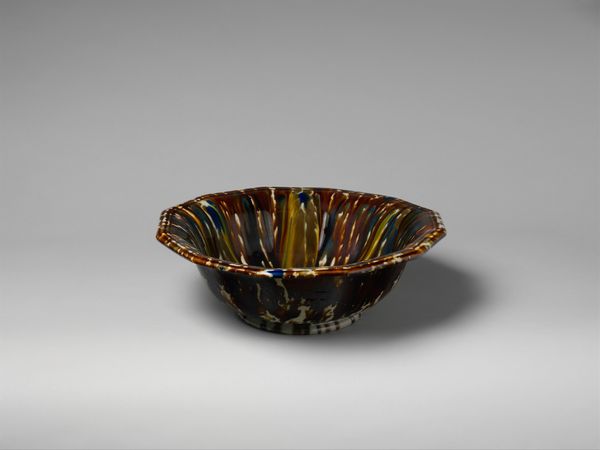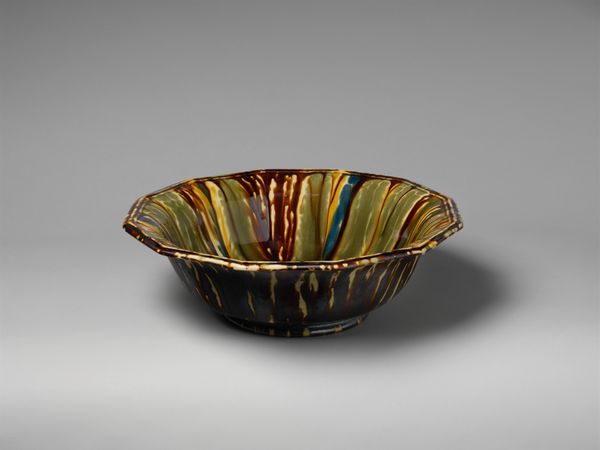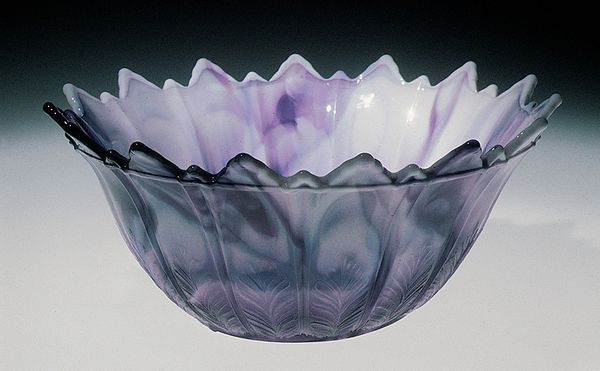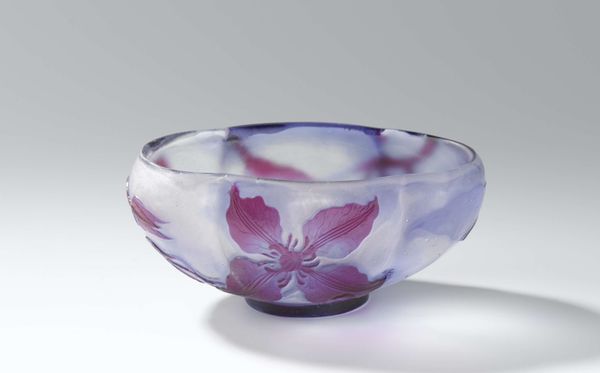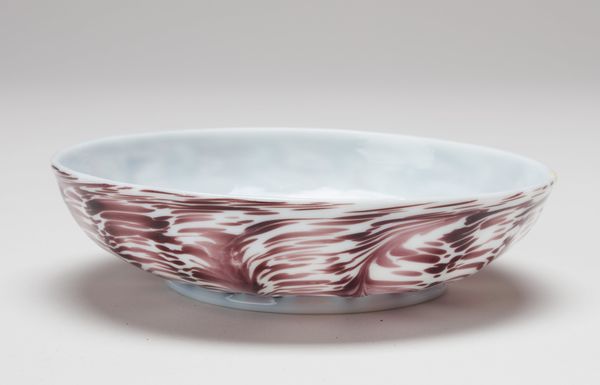
glass
#
glass
#
united-states
#
decorative-art
Dimensions: Diam. 4 1/2 in. (11.4 cm)
Copyright: Public Domain
Curator: Before us is an elegant glass "Sauce Dish", made by the Challinor, Taylor and Company sometime between 1870 and 1890. It resides here at the Metropolitan Museum of Art. Editor: Mmm, "sauce dish," you say? It makes me think of enchanted forests, really. Like a witch's cauldron, all swirling with secret ingredients. There's a delicious mystery to it. Curator: Indeed. Observe the compelling blend of milky white merging into deep violet hues, achieved through sophisticated glass-making techniques. It possesses a rhythmic scalloped edge, a visual echo found also on the base. Note also how the light interacts with the glass. Editor: It's got this hypnotizing rhythm. I could just get lost staring at that play of light and color—it feels like peeking into another dimension where flavors have their own colors. I wonder if the people using this were aware they were participating in some form of magic! Curator: I suspect the formal intentions revolved more around function and domestic aesthetic appeal. It is a classic example of decorative art from the late 19th century in the United States, capturing a moment in its design sensibilities. Editor: "Sensibilities," huh? Maybe those folks felt it was pretty fancy and new at the time. Still, a sauce dish is a blank canvas for possibilities. Someone mixed a secret family recipe in there, a little story inside every meal... it all connects, you know? It gives mundane daily things the charm that transforms any life, anywhere. Curator: It offers indeed insight into the socio-cultural milieu of its time and place of origin. Its form can tell a layered tale about style, industry, and design traditions in the American Gilded Age. Editor: All things considered, its a beautiful way to start conversations about craftsmanship, function and everyday magic.
Comments
No comments
Be the first to comment and join the conversation on the ultimate creative platform.
